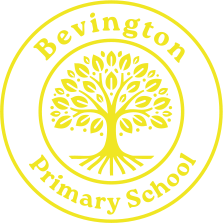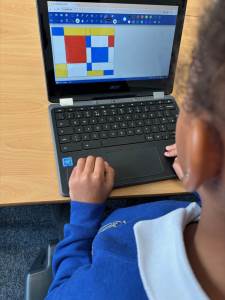Computing
At Bevington, we believe that a high-quality computing education equips children with the knowledge and skills they need to thrive in a digitally connected world. Our computing curriculum is designed to develop confident, creative and critical thinkers who can understand and change the world through technology.
Computing
Intent
We want every child to leave Bevington digitally literate and ready to participate actively and safely in the ever-evolving digital age. Our computing curriculum provides rich opportunities to:
- Develop a secure understanding of programming, digital systems, and the impact of technology on society.
- Learn how to use various digital tools to create content, solve problems and express ideas.
- Understand and manage the risks of online activity, becoming safe and responsible digital citizens.
- Build fluency through repeated exposure to key concepts across all year groups.
The aim is for all children, regardless of background or need, to grow in confidence and capability as technology users and creators.
Implementation
Computing is taught weekly from Year 1 to Year 6 using the Teach Computing Curriculum, which is rooted in up-to-date research and best practice. The curriculum is structured around four core themes:
Computing Systems and Networks, Creating Media, Programming, and Data and Information. These themes are revisited regularly in a spiral model, ensuring pupils deepen their understanding each year.
Key features of our approach include:
- Practical, hands-on learning with tools such as Bee-Bots, Crumble kits, Micro:bits and TinkerCAD.
- Structured pedagogy such as PRIMM (Predict, Run, Investigate, Modify, Make) to build problem-solving confidence.
- Carefully sequenced progression, with programming taught twice a year in every year group.
- Inclusive practice, with scaffolds like visual prompts, templates and chunked instructions to support all learners.
- Meaningful assessment, using both rubrics and multiple-choice quizzes focused on computing knowledge and skills.
Children are taught not just how to use technology, but how to understand it—developing computational thinking, creativity and resilience.
Impact
By the end of Key Stage 2, our pupils:
- Write and debug programs confidently, using logical reasoning and a variety of digital inputs and outputs.
- Understand how computer systems work and how data is used to solve problems and represent the real world.
- Navigate and evaluate the digital world safely and sensibly, knowing how to stay safe and seek support when needed.
- Apply their knowledge with increasing independence, preparing them for the digital demands of secondary school and beyond.
Through regular, thoughtfully planned learning experiences, pupils leave Bevington empowered to explore, understand and shape the technology-driven world around them.






